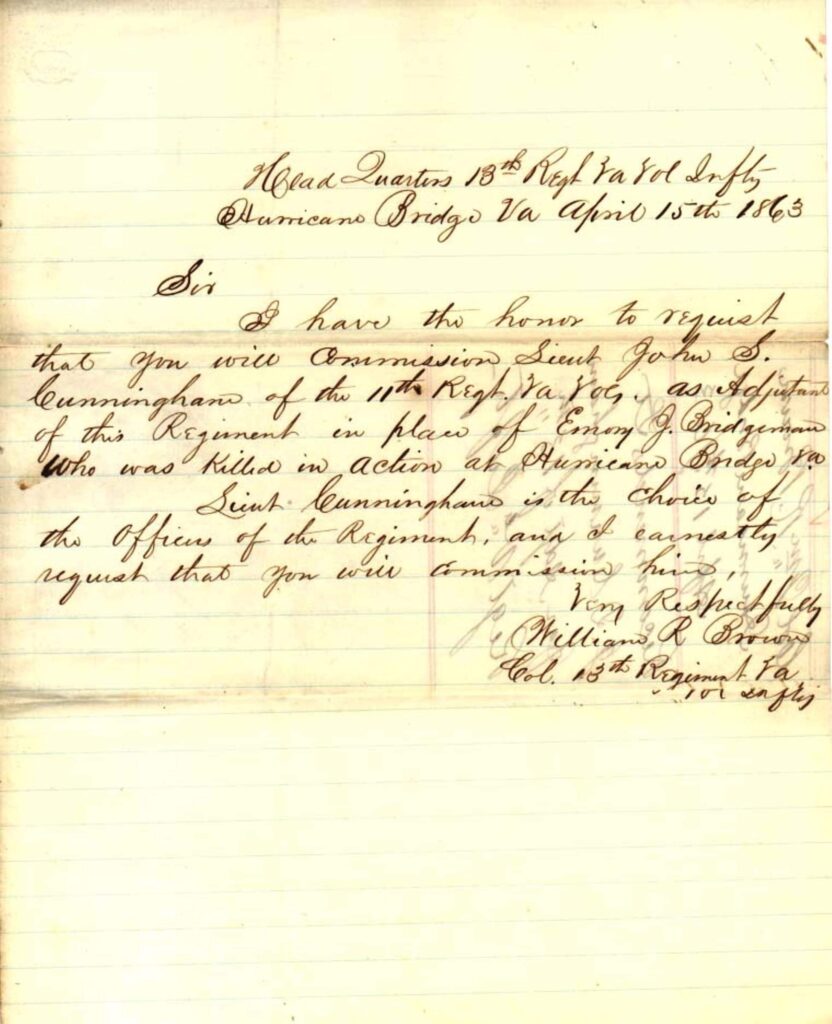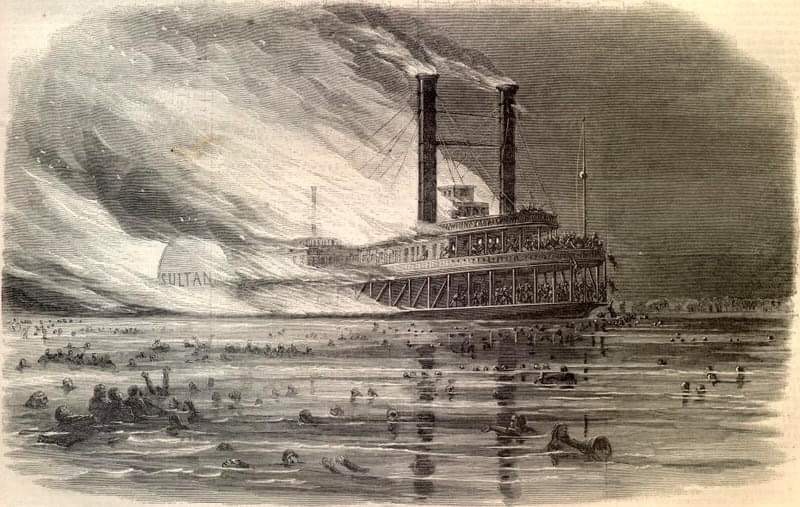Bridgeman Family: Part 1


One family with a long, rich history in Syracuse is the Bridgeman family. This article is the first of two, covering the family, and the second will be about the homestead and its renovations, maintaining it as one of the most elegant homes in Syracuse today.
James Bridgeman came to the “new world” in 1636 and settled in North Hampton, Massachusetts. The Bridgeman family lived in New England for the next 160 years until Quartus Bridgeman III, born November 11, 1805, came to settle in Minersville in 1834 and opened a coal mine. In 1837, he purchased a 100 acre farm in Syracuse. That same year, he married Rebecca Newell.

Quartus and Rebecca’s first house was a log cabin along the river. One morning, Quartus and Rebecca awoke to find their son Lonnis’ cradle floating in floodwaters that had crept into the cabin overnight. After this incident, the couple decided to relocate to a higher location on their property, and construction of the home that would come to be known as “The Old Brick” began. It is colonial in design with wallsfour layers of brick in thickness.
The Bridgeman family welcomed many Methodist preachers into their homes who traveled the circuit, traveling from church to church to preach the gospel. According to family history, when a scheduled circuit preacher would fail to appear, Quartus would take the preacher’s place and preach the circuit himself. He was said to be an “exhorter” of the Methodist faith. Quartus continued life in Syracuse where he mined coal, cut wood, worked his farm, and carried on civic activities and church duties until 1860 when he died from a stroke.

According to The Old Brick by Myrtle Bridgeman-Dunn
At this time, [Quartus’ wife Rebecca] assumed the management of his business and the land. Rebecca Newell-Bridgeman was noted for being a very gifted and talented woman in her day, and was never known to waiver under difficulties. She was fortunate enough to have the assistance of a fine [African-American] family, the Johnsons, whose house was located on the corner of her property.
Quartus and Rebecca had six children. Their oldest, Zelda Bridgeman, married John Blair, superintendent of the Syracuse Coal and Salt Works. He also was a prosperous land holder in Meigs County who was very active in local and school affairs. Emory Bridgeman graduated from Duff’s College in Pittsburgh; upon graduation, he and his brother Austin enlisted in Company F of the 63rd Volunteer Infantry which was organized in Marietta. Upon their departure from the Bridgeman homestead, Emory broke off a branch from a newly cut ailanthus tree and stuck it in the ground alongside the road remarking, “let it stand until I come back.” Unfortunately, the two brothers would never return.
The Ohio 63rdserved under Major General John Pope in Missouri as part of the Ohio Brigade in the Army of the Mississippi. While fighting there, Emory became ill and was discharged. After making a recovery, he reenlisted in the 13th (West) Virginia Volunteer Infantry and was promoted to Lieutenant of his regiment.
On April 28, 1863, Confederate forces, under Brigadier-General Albert G. Jenkins, left from Hamlin, WV,heading to Pt. Pleasant, WV,planning to attack a federal fort. A skirmish ensued with Federal troops at Hurricane Bridge who were camped on the west side of Hurricane Creek. This was the 13th (West) Virginia Volunteer Infantry under Colonel W. R. Brown. After five hours of firing from both sides, Gen. Jenkins withdrew from the fighting and continued up Hurricane Creek Road to the Kanawha River.
Confederate command sent a request to Brown for him to surrender, yet Brown declined to surrender. five hours of fighting occurred, where the Confederates surrounded the federal troops on three sides, using three nearby hills to shoot from, using rifles and sharpshooters. The Union infantry held their positions, incurring a small number of casualties (fourdead, one of which was Emory Bridgeman) and three wounded. Jenkins withdrew his forces from the fight and took cover behind the hills, thencontinued on his way up the Kanawha Valley.
Austin Bridgeman continued in the 63rd Ohio Infantry after the discharge of his brother. At New Madrid, Missouri, the 63rdwas brigaded with other Ohio regiments in what became known as the Ohio Brigade. It took part in all the operations resulting in the surrender of Island No. 10. In April 1862, the 63rd OVI joined Maj. Gen. Henry Halleck’s forces near Corinth, Mississippi. After the evacuation, it operated in Northern Alabama and participated in the battles of Iuka and Corinth in the army of William S. Rosecrans. Colonel Sprague was promoted to brigadier general, and Oscar L. Jackson assumed command of the regiment.
During 1863, the 63rd operated mostly in Northern Alabama and Tennessee. In January 1864, most of the men re-enlisted for three years, and the regiment went to Ohio on veteran furlough. In May it joined Sherman’s Atlanta Campaign and shared in all the battles to the end of the campaign. In the autumn, the 63rd took part in Sherman’s March to the Sea.
Unfortunately for Austin Bridgeman, he was taken prisoner at the Battle of Atlanta and spent seven months in the infamous Andersonville prison. At the end of the war, Austin was one of the prisoners released and was to be sent home via the steamboat SULTANA.
According to the Library of Congress,
On April 23, 1865, the vessel docked in Vicksburg, Mississippito address issues with the boiler during a routine journey from New Orleans. While in port, it was contracted by the U.S. Government to carry former Union prisoners of war from Confederate prisons, such as Andersonville and Cahaba, back into Northern territory. In order to fulfill the lucrative contract, J. Cass Mason, the Sultana’s captain, opted to patch the leaky boiler rather than complete more extensive and time-consuming repairs. Fearing that his colleagues were taking bribes to transport prisoners on other boats, Union Army Captain George Williams, who oversaw the operation, hastily ordered that all former prisoners at the parole camp and hospital at Vicksburg be transported on the Sultana. Although it was designed to only hold 376 persons, more than 2,000 Union troops were crowded onto the steamboat – more than five times its legal carrying capacity. Despite concerns of overloading from several officers, Williams refused to divide the men, insisting that they travel on one vessel.
The Sultana steamed north up the Mississippi, but the severe overcrowding and faster river current caused by the spring thaw put increased pressure on its newly patched boilers. Shortly after leaving Memphis, Tennessee on April 27th, the overstrained boilers exploded, blowing apart the center of the boat and starting an uncontrollable fire. Many of those who were not killed immediately perished as they tried to swim to shore. Of the initial survivors, 200 later died from burns sustained during the incident. Records indicate that 1,800 men died, making the Sultana incident the deadliest maritime disaster in U.S. history.
Lonnis Bridgeman married Artemesia Young, of Racine, and went on to take over the Syracuse coal and salt business that was started by Quartus. It was Lonnis who discovered that after salt had been extracted from water, bromine could be made. Lonnis was also a successful superintendent of the Methodist Sunday school in Syracuse and in later years, superintendent of the district of the State Sunday School Union. He died in 1908.
Melinda Bridgeman, known as Lynda, was said to be “very frail all her life.” Although she died in 1867 at the age of 18, she was said to havehad a love of music and flowers.
The youngest of the Bridgeman six was Quartus Bridgeman IV who married Jessie McElroy, daughter of Captain J. C. McElroy, and occupied the homestead. His mother remained there until her death. He was identified with having “the best interests of the town and a worker in the Methodist church and Sunday school.”
As the old Ohio flows….









